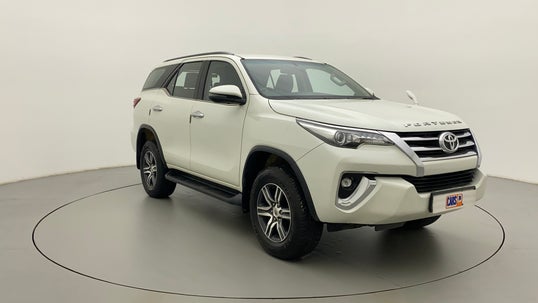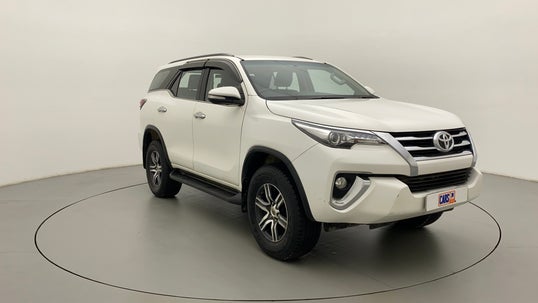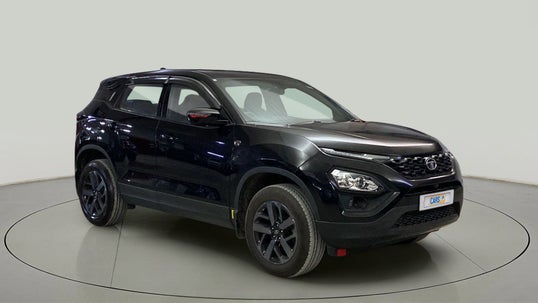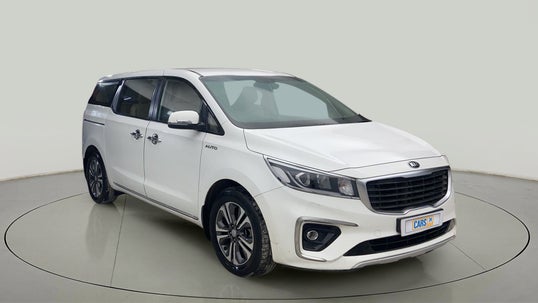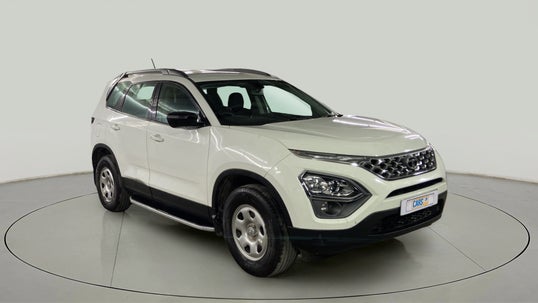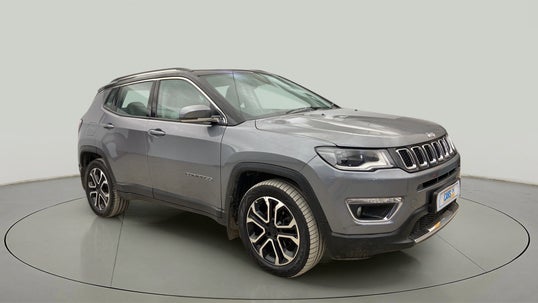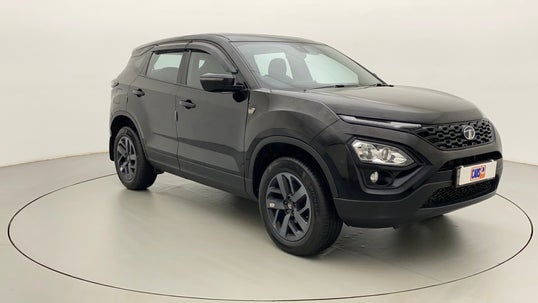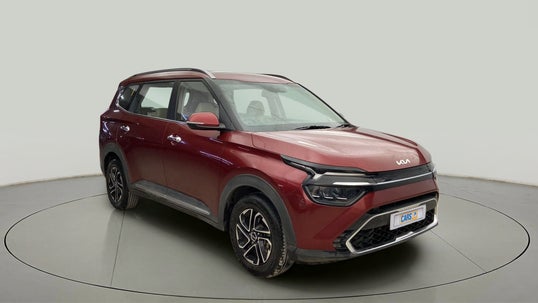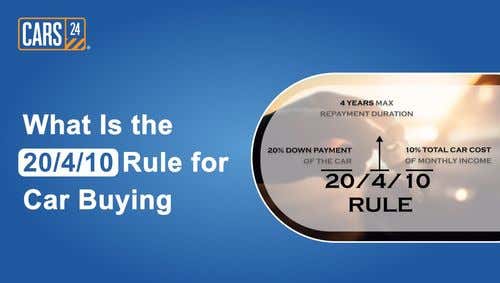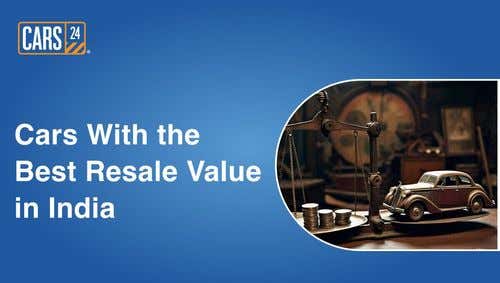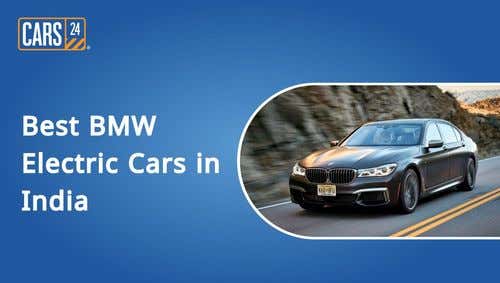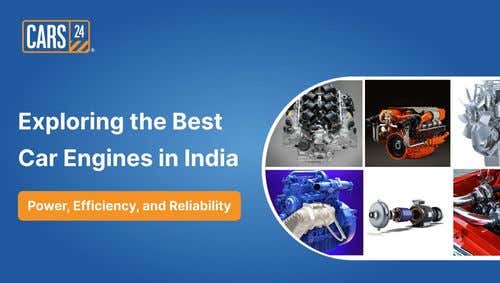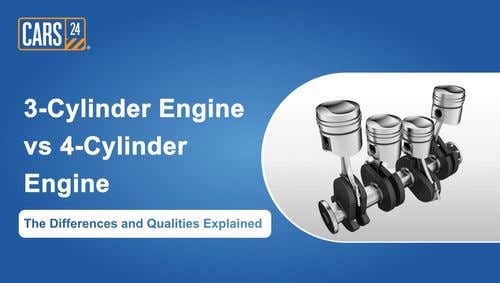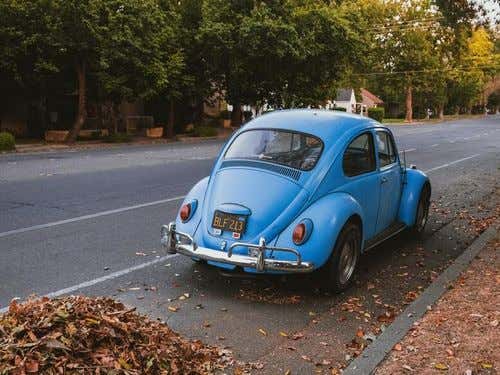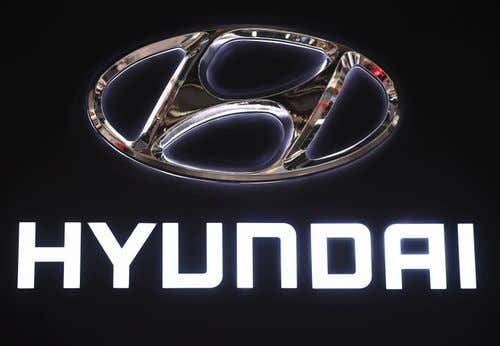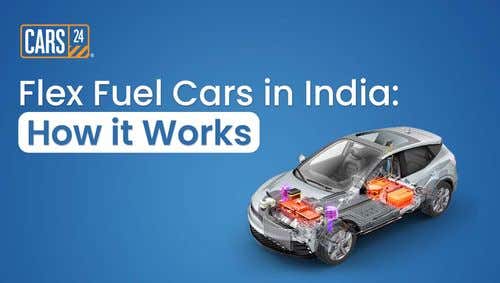What is Torque in Cars and How Does It Work? Torque vs Horsepower

Updated on: 29th August, 2023 IST
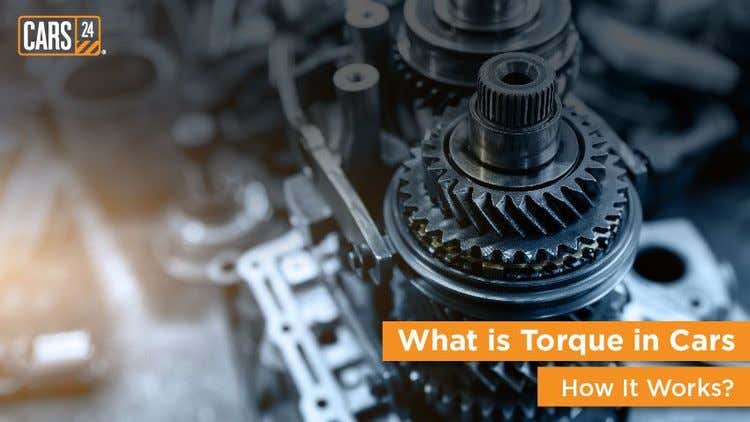
As automotive enthusiasts, we're often fascinated by the power and performance of cars. One crucial element that plays a significant role in delivering that exhilarating driving experience is torque. Torque is to your engine what your favourite food is to your taste buds, leaving you hungry for more speed and power. It's the magic ingredient that amplifies the engine's power, allowing you to unleash controlled bursts of speed when needed, like a sprinter surging ahead during the final lap of a race.
To put it simply, torque is the twisting force generated by the engine, and it determines how quickly your car can accelerate. By understanding how torque works and its impact on your driving experience, you'll gain a deeper appreciation for the intricate mechanics that make your car tick. So, let's dive into the fascinating world of torque and uncover its secrets!
Table of Contents
What is Torque in Cars?
Torque is a force that makes things rotate, like a twist or a spin. In cars, it's the twisting force that the engine creates. When fuel burns inside the cylinders, it pushes the pistons down with force. This force travels through the crankshaft, making it turn and spin the wheels.
Torque is what helps a car accelerate. More torque means more twisting force from the engine, making the car go faster. However, torque isn't the same at all engine speeds, and changes depending on the engine RPM (revolutions per minute). Depending on how the engine has been tuned, some have strong torque at low speeds, giving them power for quick starts, while others have peak torque at higher speeds, ideal for high-speed driving.
Also read : Engine Parts and functions: Working of the Car Engine Explained
How Does Torque Work in a Car?
By understanding how torque works within a car's engine and its subsequent transmission to the wheels, you'll gain a deeper appreciation for the mechanics behind your vehicle's movement. The interplay of components and the optimisation of torque delivery are key factors in achieving an exhilarating driving experience.
Let's understand how torque works in a car's engine:
- The Crankshaft
The crankshaft is like the engine's "power transmitter." It converts the up-and-down motion of the pistons into the rotational motion that makes the wheels turn and moves the car forward.
- Torque Multiplication
Cars use a transmission system to boost torque. Manual transmissions have different gear options that let you choose the right torque for different driving situations. Automatic transmissions select the right gear as per the situation without requiring inputs from the driver.
- Differential and Axles
Once torque leaves the transmission, it goes to the differential. This clever device splits the torque between the wheels, making sure the right amount is delivered to each wheel. When wheels break traction and spin during hard acceleration, a car can veer to one side, which is known as torque steer.
- Wheel Torque and Grip
The torque delivered to the wheels affects their grip on the road. Higher torque means better traction in the right conditions, especially on tricky surfaces like slippery roads or rough terrains. This is essential for off-road vehicles or those towing heavy loads.
- Power-to-Weight Ratio
Torque isn't the only factor for car performance. The power-to-weight ratio, which considers both torque and the car's weight, plays a big role. A higher power-to-weight ratio means better acceleration and overall performance.
Also Read - Cruise Control: All you need to know for a relaxed cruise
Torque and the Engine
The engine's design, displacement, and induction and exhaust system all contribute to the torque output, which directly affects the car's acceleration, towing capacity, and overall drivability.
Here's a closer look at the relationship between torque and the engine:
- Acceleration
Torque is directly responsible for a car's ability to accelerate swiftly. Higher torque allows the engine to exert greater rotational force on the crankshaft, resulting in faster acceleration from a standstill or during overtaking manoeuvres.
- Towing and Hauling
Vehicles with high torque ratings excel at towing and hauling heavy loads. Torque provides the necessary force to overcome resistance and maintain momentum when faced with challenging terrain or substantial weight.
- Drivability
Torque impacts a car's drivability, making it easier to navigate through different driving conditions. Vehicles with ample torque exhibit better low-end power, ensuring smooth acceleration and responsiveness in everyday driving scenarios.
- Hill Climbing
The ability to conquer steep inclines effortlessly is a testament to an engine's torque output. Higher torque allows a vehicle to maintain speed and power when ascending hills, ensuring a comfortable and confident driving experience.
- Fuel Efficiency
Torque also influences fuel efficiency. A well-tuned engine with sufficient torque can operate at lower RPMs while still providing adequate power. This efficient use of engine resources translates into better fuel economy.
Also Read : Car Air-Conditioner: How It Works And Common Faults
Examining How Torque Is Generated Within an Engine
Generating torque in an engine involves several important factors. Let's take a simpler look at how torque is created:
- Combustion
Torque is a result of the combustion process in the engine's cylinders. When the air-fuel mixture ignites, it creates pressure and rapidly expands.
- Crankshaft
As the expanding gases push the piston down, the crankshaft converts this motion into a spinning motion, generating torque.
- Piston Design
The design of the pistons affects torque. Longer piston strokes result in more distance travelled, producing greater torque.
- Compression Ratio
The compression ratio, which compares cylinder volume at different piston positions, influences torque. Higher ratios often mean improved torque.
- Valve Timing
Proper timing of the intake and exhaust valves is crucial for torque. Well-timed valve movements ensure efficient air and fuel flow, leading to better torque output.
- Engine Management Systems
Modern engines use advanced systems to optimise torque. Electronic fuel injection and ignition timing control help maximise torque while maintaining fuel efficiency.
Also Read : 5 Warning Signs of Engine Failure You Should Not Ignore
How Does Torque Work in Different Transmissions
In this section, we will provide you with a comprehensive comparison of various transmission types, examining their torque delivery, operation mechanism, gear changes, efficiency, and driving experience. We will also highlight the unique characteristics and functionalities of each transmission to better understand how they influence your driving performance and preferences.
Let's take a look:
| Transmission Type | Torque Function | Key Aspects | Advantages | Disadvantages |
| Traditional Automatic | Torque smoothly transferred via torque converters using hydraulic pressure | Smooth gear changes No clutch pedal required Convenient for city driving | Easy to use Ideal for stop-and-go traffic Suitable for relaxed driving | Lower fuel efficiency compared to manual Limited control over gear selection |
| Continuously Variable (CVT) | Torque transferred through a belt-driven system with an infinite number of gear ratios | Seamless gear transitions Continuously variable ratios Efficient use of engine power | Smooth acceleration Good fuel efficiency Constant torque delivery | Delayed response during hard acceleration, engine revs high before speed increases (Rubber band effect) Less engaging driving experience |
| Dual-Clutch (DCT) | Torque transferred via two independent clutches for quick gear shifts | Rapid gear changes Two clutches for odd and even gears High-performance driving capability | Smooth and quick shifts Efficient power delivery Engaging driving experience | Complex technology with higher costs Potential for jerky low-speed operation |
| Automated Manual (AMT) | Torque transferred using an automated clutch system | Semi-automatic operation Cost-effective compared to traditional automatics Good fuel efficiency | Easy to use in traffic Affordability and lower maintenance Suitable for budget-conscious buyers | Jerky gear shifts during manual mode Slower gear changes compared to DCTs |
| Tiptronic | Torque transferred automatically or manually using paddle shifters | Manual control over gear changes Smooth automatic mode when needed Combines benefits of automatic and manual | Flexibility for different driving styles Improved performance and control | Not as responsive as DCTs May not offer as many gear ratios as CVT |
| Direct Shift Gearbox (DSG) | Torque transferred via dual clutches for quick and smooth shifts | Fast and precise gear changes Combines benefits of manual and automatic Efficient power delivery | Superior performance and sporty driving experience Seamless gear transitions Good fuel efficiency | Higher cost compared to traditional automatics Potential for complex maintenance |
Turbochargers and Torque
Turbochargers are a popular technology used in modern engines to boost performance, and they have a direct impact on torque output. Let's see how turbochargers increase torque and explore their benefits and limitations.
How Turbochargers Increase Torque Output
- Forced Induction
- Turbochargers forcefully increase engine power using exhaust gases
- They compress more air into the engine, leading to higher torque
- More Air, More Fuel
- Turbochargers compress air and fuel for stronger explosions, generating increased torque
- Improved Low-End Torque
- Turbochargers excel at boosting torque at low engine speeds, enhancing responsiveness and acceleration, ideal for city driving
- Engine Downsizing
- Turbocharging allows smaller engines with high torque output like larger engines, improving fuel efficiency and reducing emissions
Benefits of Turbochargers
- Turbochargers boost engine power, enhancing acceleration and overall performance for a thrilling driving experience
- Smaller turbocharged engines produce higher torque, leading to improved fuel efficiency, consuming less fuel while maintaining impressive power
- Turbocharged engines emit fewer pollutants due to their better fuel efficiency, contributing to a cleaner and greener environment
Limitations of Turbochargers
- Delay between pressing the accelerator and feeling power boost, impacting immediate throttle response, especially at lower RPMs
- Turbochargers produce considerable heat during compression which makes it essential to have effective cooling systems and oil lubrication are vital to maintain performance and prevent damage
- Turbocharged engines are pricier due to added components and engineering which also results in more intricate and expensive repairs and maintenance
Torque vs Horsepower
Torque and horsepower are two related but distinct concepts that are often mentioned in discussions about car performance. Torque is the twisting force that an engine generates, measured in units such as pound-feet (lb-ft) or Newton-metres (Nm). Horsepower is a measurement of power, representing the rate at which work is done. It indicates how quickly an engine can perform tasks, such as generating torque.
Horsepower is calculated using the formula: Horsepower = (Torque x RPM) / 5252. This formula shows that torque and RPM play crucial roles in determining horsepower. An engine with high torque at a high RPM will generate more horsepower.
How Do You Calculate the Torque?
Calculating torque involves considering a few key factors related to the engine's specifications. Here's how you can calculate torque:
- Torque Formula
The formula for torque is Torque = Force x Distance. In the context of an engine, the force refers to the rotational force generated by the engine's pistons, and the distance refers to the distance from the centre of the crankshaft to the point of force application.
- Force
The force applied to the crankshaft is the result of the combustion process within the engine's cylinders. It is determined by the pressure generated by the expanding gases pushing the pistons downward.
- Distance
The distance in the torque formula is the measurement from the centre of the crankshaft to the point where the force is applied. This distance is known as the crankshaft's radius or the length of the crank throw.
The Bottom Line
Torque is the twisting force that powers a car, enabling acceleration, towing capacity, and overall performance. It is generated by the engine through the combustion process and transmitted to the wheels via the transmission system. Turbochargers enhance torque output by compressing incoming air, resulting in more powerful explosions within the cylinders.
Understanding the relationship between torque and engine performance is crucial for appreciating a vehicle's capabilities. While torque provides the initial force, horsepower indicates sustained power and speed. Calculating torque involves considering force and distance, providing insights into the engine's rotational force. Torque is the unseen hero that propels cars forward, making driving experiences thrilling and dynamic.
FAQs
Q. Is high torque good in a car?
Yes, high torque is desirable in a car for quick acceleration, towing capabilities, and overcoming resistance in situations like climbing steep hills or off-road driving.
Q. What is speed vs torque in a car?
Speed refers to how fast the car is moving, while torque is the twisting force that enables acceleration and maintains speed.
Q. What is torque, and why is it important in cars?
Torque is the rotational force produced by the engine that enables a car to move. It's important for acceleration, towing, and overcoming resistance. Higher torque means better performance.
Q. Does torque affect a car's acceleration?
Yes, torque directly affects a car's acceleration. Higher torque enables quicker acceleration by generating more rotational force.
Q. Can torque be increased in a car?
Yes, torque can be increased in a car through methods like engine modifications, optimising intake and exhaust systems, and tuning the engine's performance parameters. These enhancements boost the engine's power output.
Recently Added Cars to Buy
Other Blogs
- Recent
- Featured
Popular Cities to Sell Car

